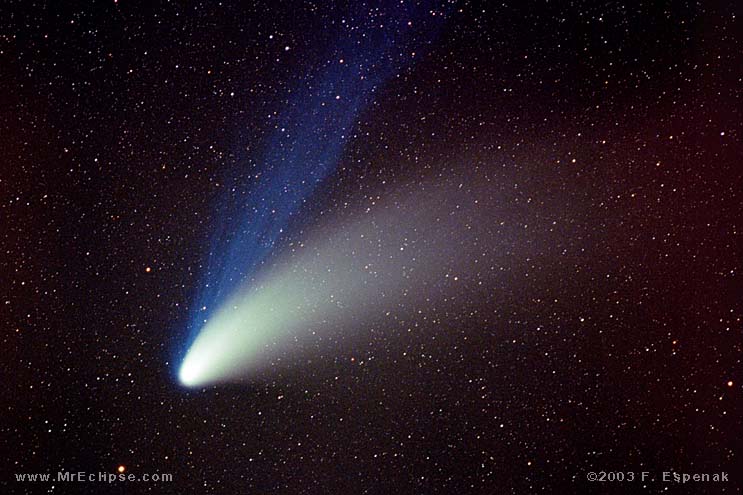Comet Hale-Bopp - 1
Comet Hale–Bopp (aka C/1995 O1) is arguably the most spectacle and most widely observed comet of the 20th century. Discovered in mid-1995, the comet was then a faint 10th magnitude object in Sagittarius. At a distance of 7.2 astronomical units (between the orbits of Jupiter and Saturn), Hale-Bopp already had an active coma hinting that this was no ordinary comet.
The comet first became visible to the naked eye in May 1996 but it was hidden in the solar glare during the latter part of the year. When it reemerged in the evening sky in January 1997, it was already bright enough to be seen from large light-polluted cities. Hale-Bopp developed two tails: a blue gas tail pointing directly away from the Sun and a yellow-grey dust tail curving along the comet's orbit.
The comet passed through perihelion on April 1, 1997, but its closest approach to Earth occurred several weeks earlier on March 22. Throughout this period, the brilliant comet and its long tail were seen by many millions of people in the Northern Hemisphere. As the comet's orbit carried it away from the Sun, it moved into Southern Hemisphere skies where it eventually faded from view.
Additional images can be seen in the Comet Hale-Bopp Photo Gallery.For more information, see the Wikipedia entry about the comet.
Technical Details
- Object: Comet Hale-Bopp - 1
- Date/Time: 1997 March 22
- Location: Shenandoah National Park, VA
- Mount: Celestron Super Polaris German Equatorial Mount
- Lens: Nikkor AI 180mm f/2.8
- Camera: Nikon FE 35mm SLR
- Film: Kodak Ektachrome 400
- File Name: HB97-114aw.jpg
- Rights: Copyright 1997 by Fred Espenak. All Rights Reserved. See: Image Licensing.
